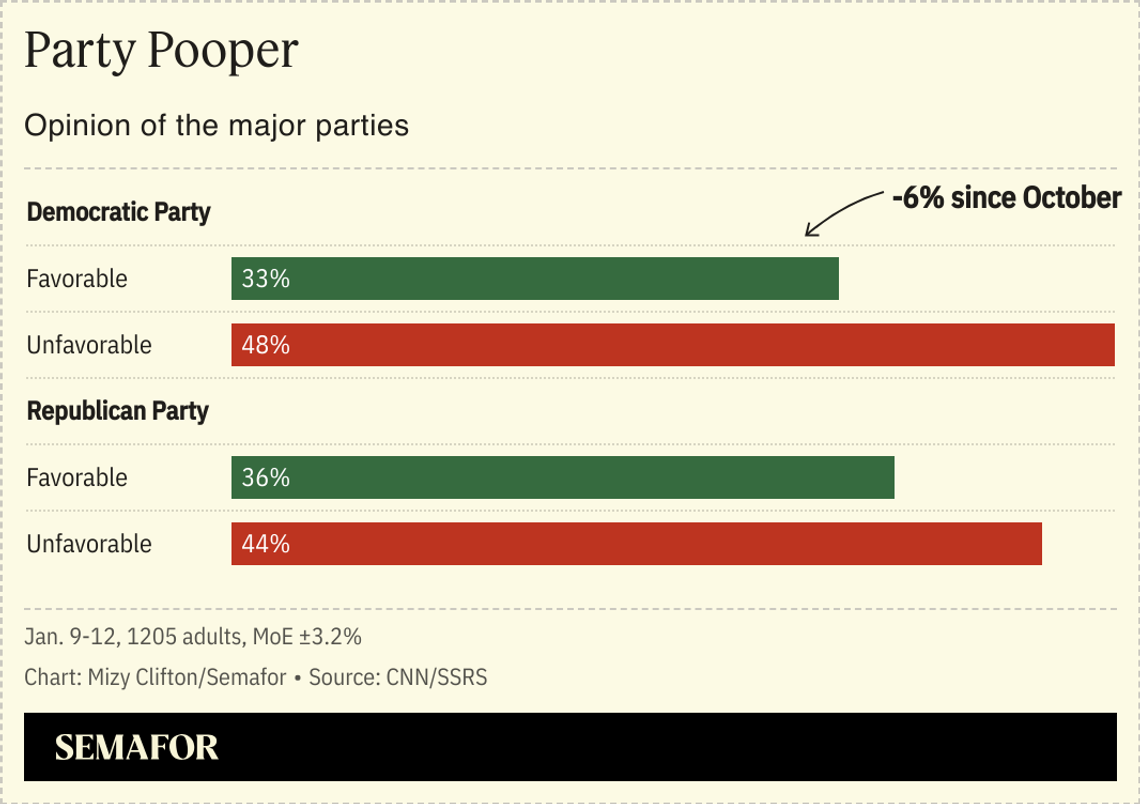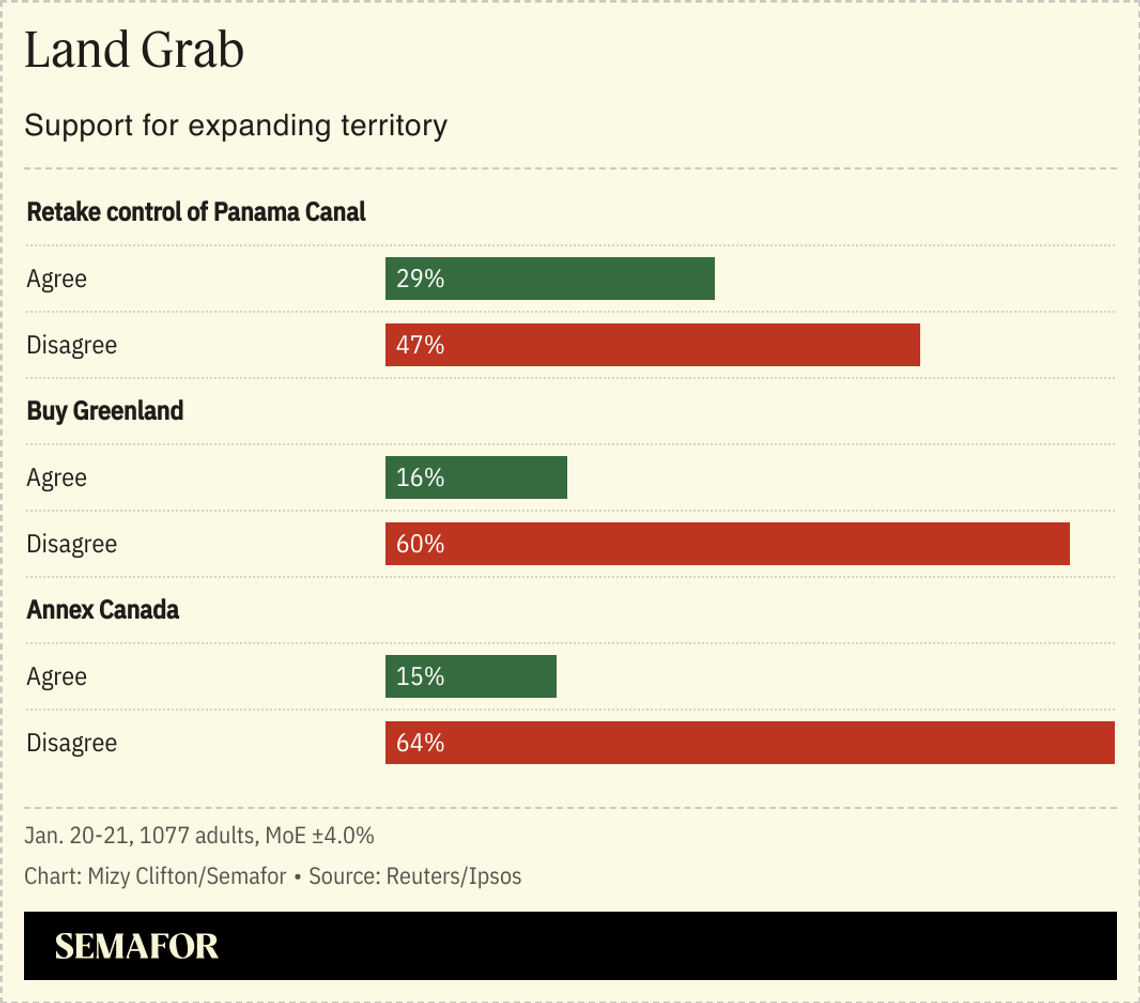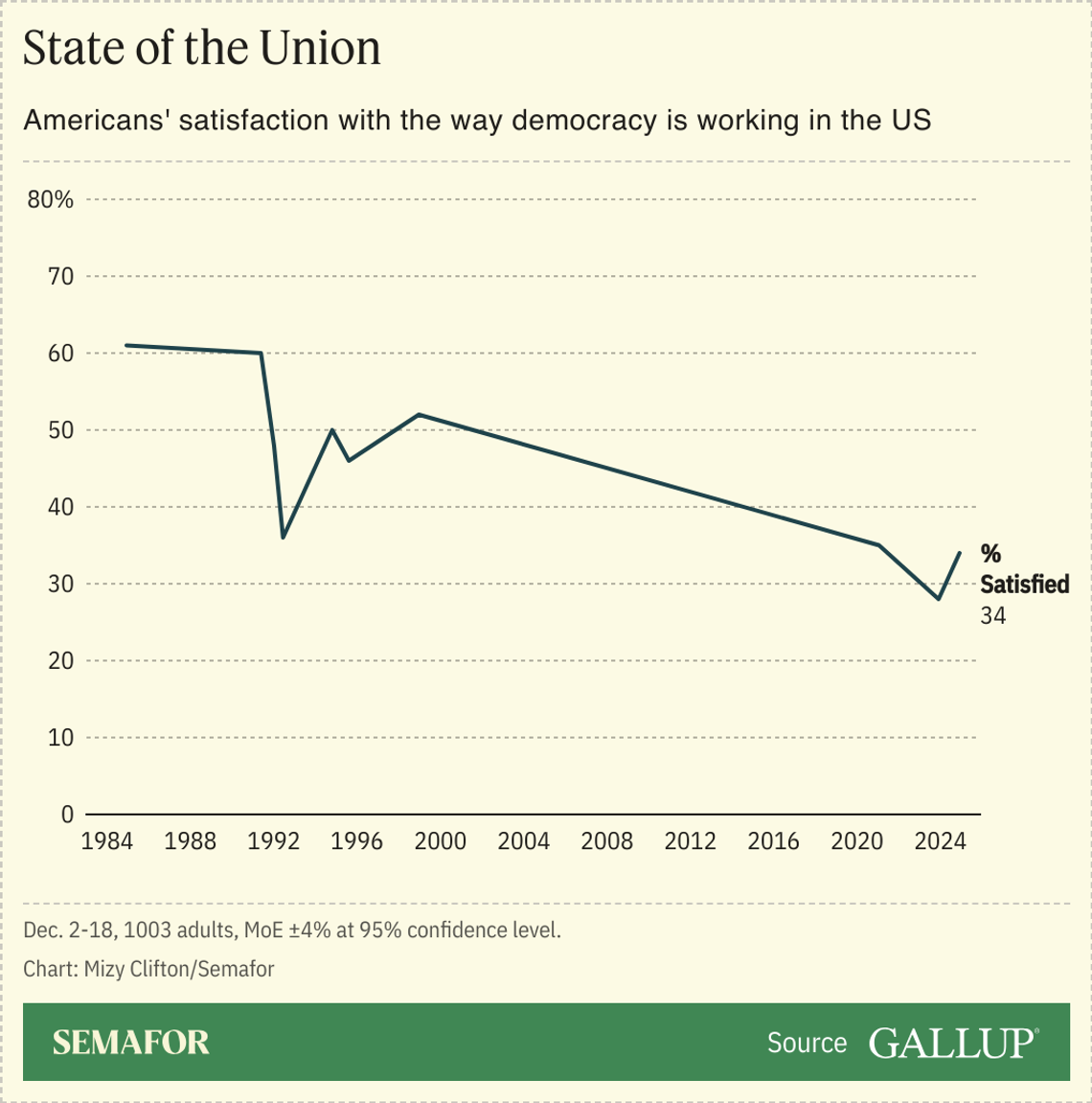 Polls No party thrives right after losing a national election. They are rarely as hard-up as the Democrats are now — even if, in terms of power in the states and in Congress, they have more influence than they did after their last big defeat. In CNN’s polling, the party is less popular than it’s been in decades, with 51% of self-identiified Democrats expecting it to be ineffective in opposition, and 18% now viewing it unfavorably. Some of the drop-off comes from voters who’ve stopped paying attention to politics, which is affecting Republicans, too. Democrats suffered an identical six-point hit after losing the 2016 election, while support for the GOP jumped by 5 points. But Democrats are especially miserable about their team, and Republicans are largely optimistic about what will happen under Donald Trump.  On Monday, Donald Trump became the first president since James K. Polk to devote part of his inaugural address to the idea of territorial expansion. “We’re taking it back,” he said of the Panama Canal. It was one of the least popular ideas in the speech — supported here by most Republicans, but no other group of voters, many of whom weren’t alive when the United States last controlled the Canal zone (1979). Trump’s other riffs on expansionism have little support, even though plenty of Republicans have endorsed them, with varying levels of seriousness. They’ve been more interested in his commitment to renaming the Gulf of Mexico, which doesn’t require any money or changes to the map.  For more than two decades, Gallup’s pollsters didn’t bother asking how Americans felt about their democracy. Their optimism cratered in 1992; it bounced back after Bill Clinton’s election, and stayed stable. Starting in 2021, Gallup started asking the question again, and found a complete collapse in confidence, with nearly two-thirds of all adults saying they were dissatisfied with American democracy. The bounce here comes mostly from Republicans, whose faith in the system nearly doubled after the 2024 election — from 17% to 33%. That put them in sync with independents and Democrats. No group of voters is mostly optimistic about the system right now, which explains why the Democrats’ effort to cast Trump as a threat didn’t move the needle last year. Ads The Heritage Foundation/YouTube The Heritage Foundation/YouTube- Susan Crawford for Wisconsin, “Never.” The ad for Democratic Party-backed candidate for Wisconsin’s open court seat went on air shortly after the Republican-backed candidate’s, with the election’s first negative spot. Brad Schimel’s intro ad highlighted his work closing rape cases; Crawford says he “left 6,000 rape kits untested,” an issue Attorney Gen. Josh Kaul seized on during his successful 2018 campaign against Schimel. That and an accusation that he went soft on a donor make him “too extreme” for the job.
- Schimel for Justice, “Lies.” The Republican’s campaign was ready for Crawford, with a southeast Wisconsin sheriff on tape defending Schimel’s record. “I don’t call it a sexual assault kit initiative — I call it a Brad Schimel initiative,” says Dodge County Sheriff Dale Schmidt, a Republican who gained attention last year for campaigning with Donald Trump and urging local clerks not to allow voting drop boxes. Such cases wouldn’t come before the supreme court, but these races increasingly focus on crime, with Republicans pressing their post-Ferguson advantage with law enforcement figures.
- The Heritage Foundation, “Tulsi Gabbard: Warrior. Patriot. Fighter.” The shotgun wedding between Donald Trump’s ex-Democrat nominees and the right’s powerhouse think tank continues with this multi-million dollar buy on behalf of perhaps the least secure Cabinet nominee. Like Gabbard’s 2020 campaign advertising, it emphasizes her military experience over any of her political views; the footage of her saying “I love our country,” and “I have dedicated my entire adult life to protecting the safety, security and freedom of all Americans,” actually comes from that campaign, when she was firing back at Hillary Clinton for saying she’d been “groomed” by Russia.
Scooped!What the heck is Jubilee? I’d seen the new media company’s viral “Surrounded” videos, where guests face down ordinary people who want to dismantle their ideas and arguments. But I’d never really asked about the origins of this stuff. Spencer Kornhaber did so for The Atlantic, and his profile is really insightful: “Jubilee’s success suggests why deplatforming—the strategy of blocking bigots and liars from public stages—has proved ineffective.” Next - Eight days until the DNC leadership elections
- 67 days until Wisconsin’s state supreme court election
- 284 days until off-year elections
- 648 days until the 2026 midterm elections
David RecommendsJames Pogue is always worth reading, and I’d been waiting for his piece on the Democratic Party’s internal crises since I ran into him at the 2024 convention. The weekly newsletter is the highest form of writing, but the longform magazine article is up there; Pogue quotes Democrats like Jamie Raskin and Marie Gluesenkamp Perez over enough space to really interrogate their ideas, and paints vivid pictures of the campaigning that preceded their widespread defeats. |